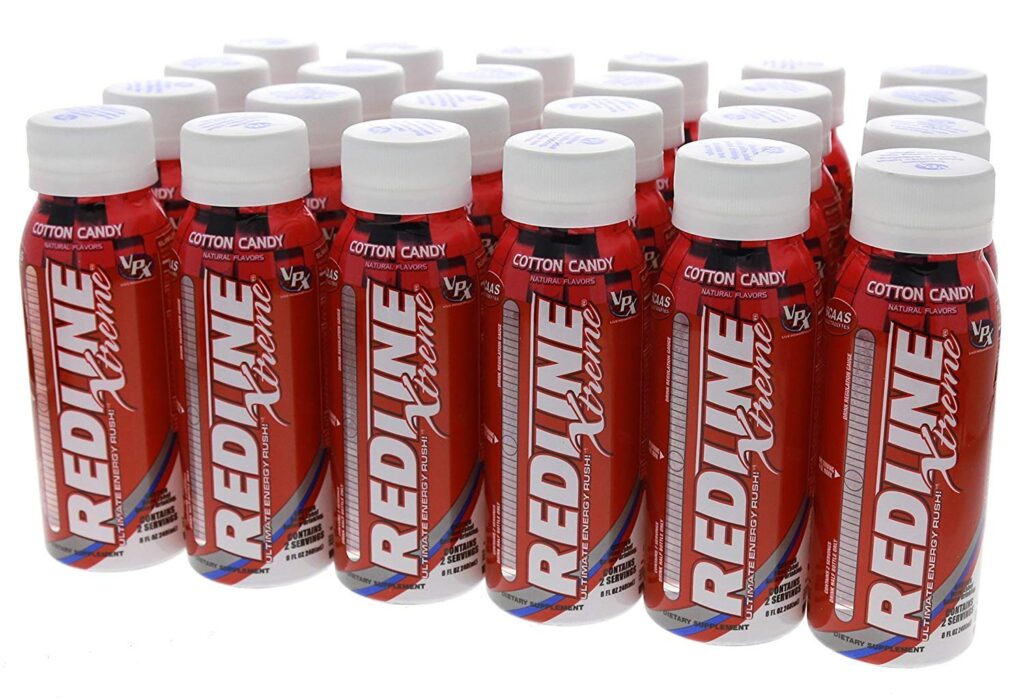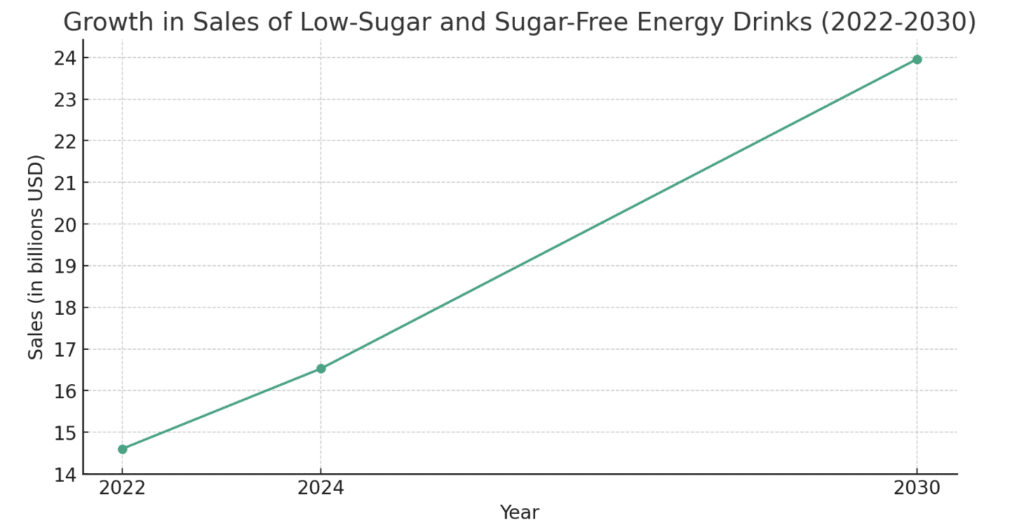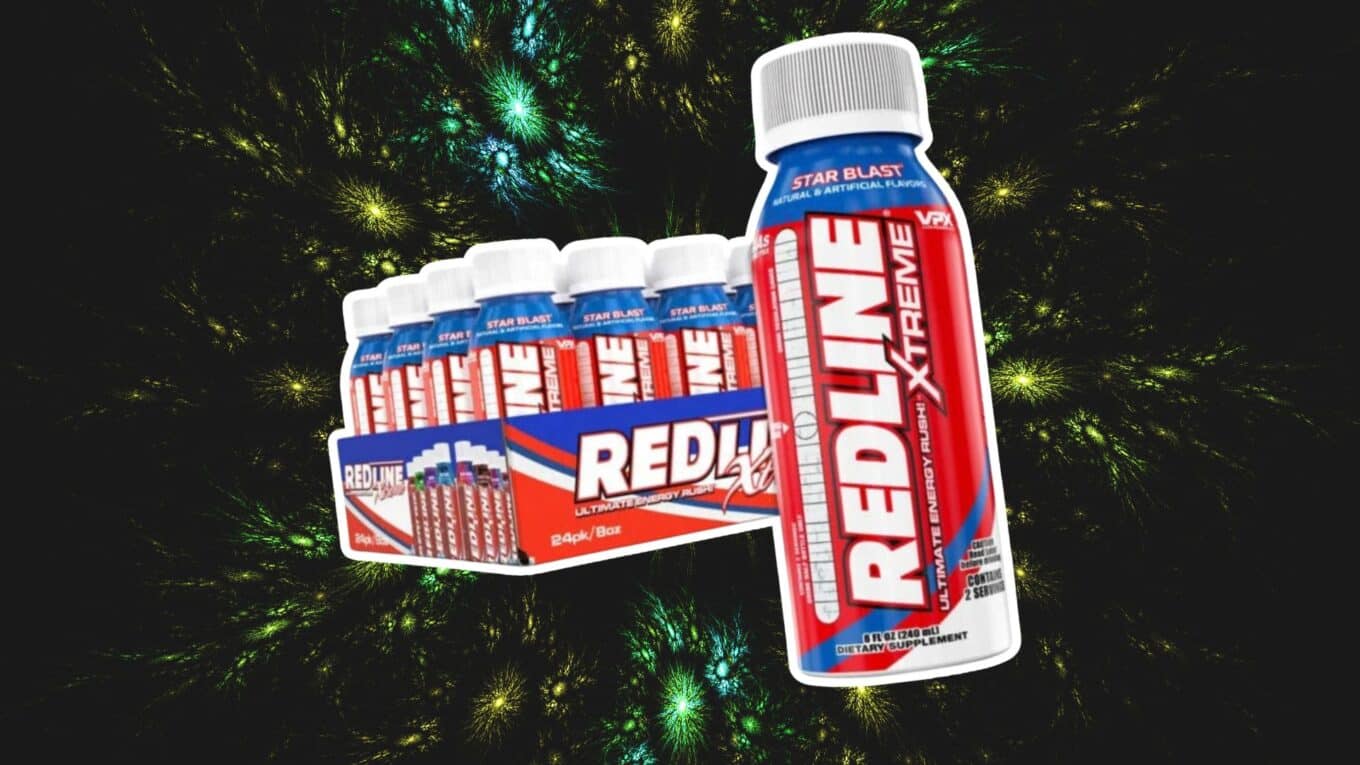Craving an energy boost that won’t leave you crashing hard? You’re not alone.
Many popular energy drinks contain sugar and questionable ingredients, leading to jitters and dreaded energy slumps. But what if there was a better way to stay energized without the unwanted side effects?
Enter Redline energy drinks. This article will explore how Redline compares to other leading brands in terms of caffeine content and overall formula.
Get ready to discover a smarter way to power through your day!
Overview of Caffeine Consumption

1. What is Caffeine?
Caffeine, a natural stimulant found in coffee beans, tea leaves, and cacao pods, is consumed daily by millions worldwide.
Caffeine is the world’s most widely used psychoactive substance, and it is integral to beverages like coffee, tea, soft drinks, and energy drinks.
Global coffee consumption continues to rise, with over 166 million 60-kilogram bags consumed in 2020/21.
2. Caffeine Consumption- Health Guidelines
The U.S. Food and Drug Administration (FDA) recommends a daily caffeine limit of 400 milligrams for healthy adults, equivalent to about four or five cups of coffee.
Pregnant women should limit their intake to 200 milligrams per day. However, individual sensitivity to caffeine varies, so some may experience effects at lower doses.
3. Comparison of Caffeine Content
The caffeine content of popular beverages varies:
| Beverage | Serving Size (fl oz) | Caffeine (mg) |
|---|---|---|
| Coffee (brewed) | 8 | 95-200 |
| Espresso | 1.4 | 47-75 |
| Tea (black) | 8 | 14-70 |
| Tea (green) | 8 | 24-45 |
| Coca-Cola | 12 | 34 |
| Red Bull (energy drink) | 8 | 80 |
| Monster Energy | 16 | 160 |
| 5-Hour Energy (energy shot) | 1.93 | 200 |
| Redline Energy Drink | 8 | 316 |
Redline Xtreme Energy Drink

Redline Xtreme is a powerful energy drink containing 316mg of caffeine per 8-ounce bottle and potent ingredients like Beta-Alanine, L-Tyrosine, and electrolytes.
This sugar-free, calorie-free drink aims to significantly boost energy, focus, and endurance without the jitters or crashes associated with other energy products.
Designed for those seeking a serious energy lift, Redline Xtreme targets athletes, fitness enthusiasts, and busy professionals who need to stay sharp and powered up for intense physical or mental challenges.
The manufacturer recommends consuming no more than one bottle daily and avoiding usage by children or pregnant women.
Comparison of Redline Energy Drink with Other Brands
| Brand | Category | Caffeine Content (mg per serving) | Product Range | Market Positioning |
|---|---|---|---|---|
| Redline Energy | High Caffeine Niche | 316 | Energy drinks, Xtreme series, Watermelon, Blue Razz | Targeting extreme athletes and fitness enthusiasts |
| Bang | Market Leaders | 300 | Various flavors, zero-calorie options | Popular among young adults and fitness enthusiasts |
| Monster Energy | Market Leaders | 160 | Wide variety including coffee blends, juice blends | Broad appeal, widely available, lifestyle brand |
| 5-Hour Energy | Specialized Products | 200 | Energy shots, regular and extra strength | Marketed for quick energy boosts without bulk |
| Celsius | Specialized Products | 200 | Energy drinks and teas with various flavors | Health-oriented, marketed as a fitness drink |
| Spike | High Caffeine Niche | 350 | Hardcore energy drinks | Appeals to extreme sports enthusiasts |
| Reign Total Body Fuel | High Caffeine Niche | 300 | Energy drinks with BCAAs and electrolytes | Positioned for athletes and high-performance users |
| Rockstar | Diverse Offerings | 160 | Wide range, including energy waters and organic | Appeals to a broad demographic with varied tastes |
| NOS | Diverse Offerings | 160 | Energy drinks, high-performance focus | Car culture enthusiasts, performance-oriented |
| Amp Energy | Adaptive Brands | 142 | Energy drinks with a variety of flavors | Originally marketed to a mainstream audience |
| Full Throttle | Adaptive Brands | 160 | Energy drinks, simple lineup | For bikers and motorsport fans, traditional energy drink feel |
| C4 | Emerging Brands | 200 | Pre-workout drinks, energy drinks | Marketed for fitness enthusiasts, innovative formulas |
| Raze | Emerging Brands | 300 | Energy drinks with focus-enhancing ingredients | Targets gamers and those needing mental endurance |
Market Trends and Consumer Preferences

Here is a line graph depicting the projected growth in sales of low-sugar and sugar-free energy drinks from 2022 to 2030.
1. Increasing Demand for Low-Sugar Options
In recent years, there has been a significant shift in consumer preferences towards healthier, low-sugar beverage options.
As awareness of excessive sugar consumption’s potential negative health impacts grows, consumers actively seek energy drinks with reduced sugar content or sugar-free alternatives.
This trend is evident in the increasing sales of low-sugar and sugar-free energy drinks and the introduction of new products catering to this demand.
2. Consumer Behavior Trends
Health-conscious consumers are becoming more discerning in their energy drink choices, carefully examining labels for sugar content, artificial ingredients, and potential health benefits.
This heightened awareness has led to a growing preference for energy drinks that offer functional benefits beyond just a caffeine boost, such as those containing natural ingredients, vitamins, or electrolytes.
Consumers are also willing to pay a premium for healthier, low-sugar options, shifting priorities from purely price-based decisions to a focus on overall value and health impact.
There is also a growing interest in energy drinks catering to specific dietary preferences, such as vegan, gluten-free, or organic options. Consumers seek brands aligning with their values and lifestyle choices as they become more informed and engaged in purchasing decisions.
3. Impact on Market Trends
In response to these evolving consumer preferences, energy drink manufacturers are adapting their product development and marketing strategies.
Many established brands are reformulating their products to reduce sugar content, while new entrants to the market are leveraging the demand for healthier options as a key differentiator.
The launch of low-sugar, sugar-free, and naturally sweetened energy drinks and those fortified with vitamins, minerals, and organic ingredients has increased significantly.
Brands also invest in marketing campaigns emphasizing their products’ health benefits and functional attributes, moving away from the traditional focus on extreme sports and high-octane lifestyles.
Furthermore, the rise of smaller, niche brands prioritizing health and transparency is challenging the dominance of established players in the market.
These brands often have a strong online presence and engage directly with consumers through social media, fostering a sense of community and loyalty around shared values of health and wellness.
Benefits of Redline Xtreme Energy Drink

- High Caffeine Content: With 316mg of caffeine per 8oz bottle, Redline Xtreme offers nearly four times the caffeine of Red Bull and double that of Monster Energy, making it a potent choice for those seeking a powerful energy boost.
- Sugar-Free and Calorie-Free: Unlike many popular energy drinks laden with sugar and calories, Redline Xtreme is sugar-free and calorie-free, making it a more health-conscious option for those watching their sugar intake or managing their weight.
- Electrolyte Blend: Redline Xtreme contains electrolytes, which can benefit athletes and fitness enthusiasts who lose these essential minerals through sweat during intense workouts. Replenishing electrolytes can help support hydration and optimal physical performance.
- Mental Focus and Clarity: Besides physical energy, Redline Xtreme includes ingredients like L-tyrosine, which may help support mental focus and clarity under stressful conditions or during challenging cognitive tasks.
- No Artificial Colors: Redline Xtreme is free from artificial colors, appealing to consumers who prefer a more natural energy drink selection.
- Convenient and Compact Packaging: The 8oz bottle size of Redline Xtreme is more compact and portable than many 16oz energy drink cans, making it easier to carry in a gym bag, backpack, or briefcase for on-the-go energy.
Conclusion
In conclusion, as the energy drink market evolves to cater to health-conscious consumers, Redline Xtreme stands out with its high caffeine content, sugar-free formula, and electrolyte blend.
While it’s crucial to be mindful of your caffeine tolerance and adhere to recommended daily limits, Redline Xtreme can be a powerful ally for those seeking a serious energy boost without the sugar crash.
As you navigate the energy drink options, prioritize your health and well-being. Whether you’re an athlete, a busy professional, or simply looking for a pick-me-up, understanding your energy drink’s caffeine content and ingredients is key to making informed decisions.
So, the next time you reach for an energy drink, consider trying Redline Xtreme!
Frequently Asked Questions
Which Energy Drink Has the Least Caffeine?
GURU Energy Drink has one of the lowest caffeine contents at 100 mg per 12 oz can.
What Drink Has More Caffeine than Red Bull?
Monster Energy and Rockstar have more caffeine than Red Bull, with around 160 mg per 16 oz can.
How Much Caffeine is Too Much a Day?
The FDA recommends no more than 400 mg of caffeine daily for healthy adults.
Is 200 mg of Caffeine a Lot?
200 mg of caffeine is about two cups of coffee, which is moderate for most people.
What Company Owns Redline Energy Drink?
Bang Energy, the company behind the popular Bang energy drinks, owns Redline Energy Drink.




